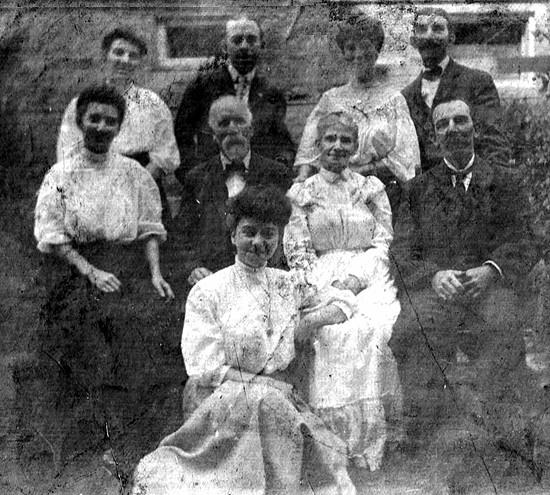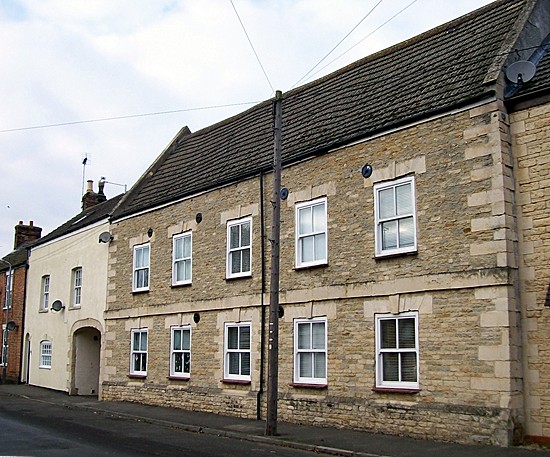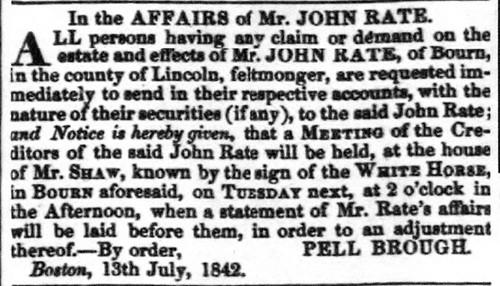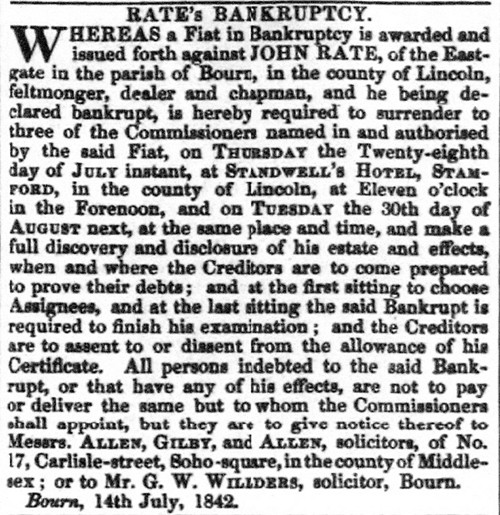|
John Rate
Among the immigrants from Bourne in
the early 19th century was John Rate although the move to America ended in
tragedy for the family.
He ran a tannery business on the banks of
the Bourne Eau in Eastgate but got into financial difficulties and was
declared bankrupt with the result that in 1842, all of his possessions
such as household furniture, stock and trade effects, were ordered to be
sold at public auction without reserve in a two-day sale which was held on
11th and 12th July, the effects including his bed and even his dog.
A list of the items advertised in the local newspaper indicates that
he had been living in some style including mahogany furniture, luxury carpets, a Broadwood piano, clocks, maps, pottery and porcelain,
framed prints, fire irons, cutlery and linen, cut glass and decanters, tea
and coffee urns, pantry, kitchen and laundry requisites, while outside there were horses, waggons and carts, a quantity of brewing
equipment, land with standing corn, wool and skins, all of which were sold
at knock-down prices.
The following year, in May 1843, his house
and business premises were also sold and a description gives another
indication of Rate's grand lifestyle. The house contained a dining room,
drawing room, seven bedrooms, kitchen, larder, cellar, wash house, dairy
and a large water cistern upstairs, a luxury at that time. There was also
an adjoining paddock and farmyard with a barn, stables, gig house,
pigsties, garden and fellmonger's yard with a water supply, lime and
tanning pits, a kiln and drying sheds, a shop and office for business use.
Unfortunately, the entire property was heavily mortgaged and the sale
conducted privately and so the selling price is not known but could not
have produced much capital.
Disillusioned by the experience, Rate decided to emigrate and found
sufficient funds to leave the country and in 1845, at the age of 44, he
booked a passage for New York with his wife, Sarah, and three young
children, daughter Louisa and sons John and Edward.
He settled in the Bronx, then an area of small rural farms supplying the
city markets, where he found work and the children grew up but John, the
elder of the two sons, separated from the family when he decided to move
south.
Thus it was in 1861 when the American Civil War broke out, a bloody
conflict over the controversial issue of slavery that split the nation and
by the time it ended in 1865 had cost the lives of 600,000 soldiers.
John, then 23, joined the army for the
Confederacy, or the South, while Edward, his younger brother, had enlisted
for the Union, or the North, at the age of 18, and so they found
themselves on opposing sides. Edward survived the war but John died from
his wounds on the battlefields of Virginia in 1862, identified among the
thousands of dead only by his personal bible which he had carried
everywhere.
In later years, Edward recalled their last heart-rending meeting. “Our
regiment was marching in column and halted at a ruined bridge over a creek
while preparations were made to ford the stream”, he said. “A few feet
away from where I was standing, I noticed a wounded Confederate soldier
sitting on a log reading a little book with a peculiar plain cloth cover.
"The soldier’s legs, shattered by a bursting shell, were dangling from the
log and blood was trickling though the dirty bandages. The dying soldier
started when he saw me and tried to rise. His lips moved but I did not
catch the sound. I seemed to recognise the features of someone I had known
in that lean face, powder grimed and twisted with pain. I felt an impulse
to leave the ranks and go to him but just then the order came ‘Forward
march’. I never saw him again.”
Edward was to recount these events at regimental reunions held in the
Bronx where he lived to be 81 and their story has been told to me by his
great granddaughter, Jill Borman, of Plainfield, New Jersey, who is busy
tracing her ancestors and compiling her family tree and is anxious to find
out more about John Rate and his family before they left Bourne for the
new world 170 years ago.
|
PHOTO ALBUM |
|
 |
|
John Rate's younger son Edward (bearded
centre), who had been two years old when he left Bourne and became an American
citizen in 1874, pictured with his wife and family on
the front steps of their home in the Bronx. |
 |
|
The old tannery buildings in Eastgate, now
converted into flats. |
|
FROM THE ARCHIVES |
|
 |
|
Public notices from the Stamford Mercury on
Friday 15th July 1842. |
|
 |
|
SALE of valuable HOUSEHOLD FURNITURE, LIVE and
DEAD STOCK, CROPPING, and effects, at BOURNE. To be sold by auction
without reserve, by Charles Cave. On the premises of Mr JOHN RATE,
Eastgate, Bourne, on Monday and Tuesday, July 11th and 12th, 1842.
ALL the valuable household furniture etc., comprising excellent
four-post and camp bedsteads with moreen [a strong, ribbed cotton
fabric used chiefly for curtains] etc. hangings,
feather-beds, mattress and bedding complete, mahogany and painted
chests of drawers, sets of chamber chairs, dressing-tables, wash
stands with toilet sets, moreen window curtains with cornices,
chimney, pier and swing glasses, large Brussels and Kidderminster
floor carpets and hearth rugs, chamber and stair carpeting, mahogany
dining, Pembroke, card and tea tables, handsome mahogany sideboard
with plate glass at back, pianoforte by Broadwood, mahogany sofa,
sets of six and two arm mahogany chairs, handsome bronze, brass and
wire fenders, highly polished fire irons and fire brasses, two
French timepieces, capital prints framed and furnished, large
railway map, eight-day clock, selection of cut glass in decanters,
tumblers, wines etc., handsome dinner, dessert and tea services, bed
and table linen, sets of ivory-handled knives and forks, liquor and
cruet frames complete, Japan tea trays and waiters, tea and coffee
urns, with a general assortment of pantry, kitchen and laundry
requisites, etc. etc.: also silver plate in tankard, cup, table, tea
and salt spoons.
THE LIVE and DEAD STOCK, CROPPING etc. include three useful working
horses, mare and foal (by Eclipse), Newfoundland dog and kennel,
neat gig, narrow wheeled waggon, broad wheeled cart, two light
carts, set of light waggon harness, capital weighing machine and
weights, 72-gallon copper, brewing tubs and several 36 and 18 gallon
casks; 8 acres of barley, 8 acres of oats, 8 acres of summer-eat
pasture until the 10th October next, a stack of well-got clover to
be taken off the premises, large heap of manure, lot of wool, skins,
glue, stuff, various implements, wood, etc.
Sale to commence each day at 10 o'clock; and the livestock,
cropping, and outdoor effects will be sold on the second day in the
afternoon.
- public notice from the Stamford Mercury, Friday 8th July 1842. |
REVISED MARCH 2014
See also
Bourne
lads who fought in the American Civil War

Go to:
Main Index Villages
Index
|



